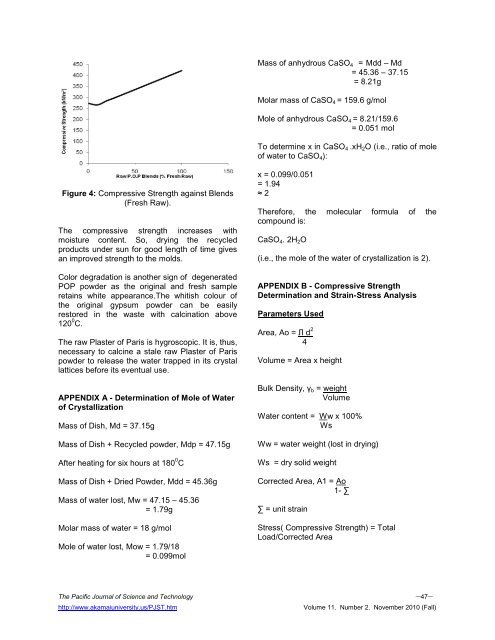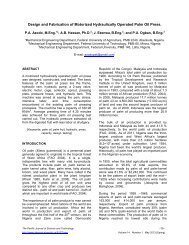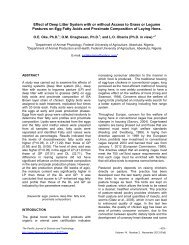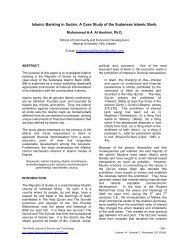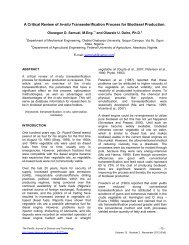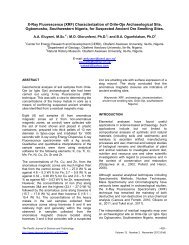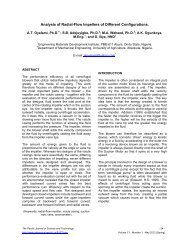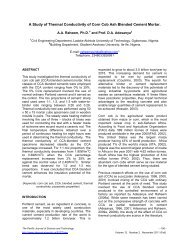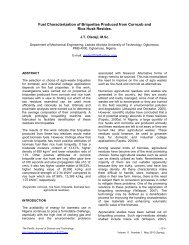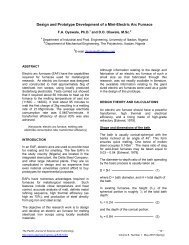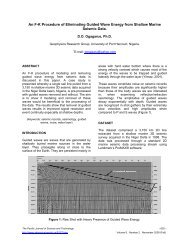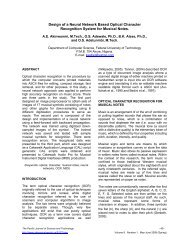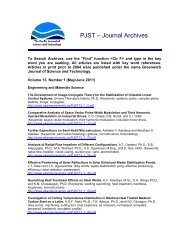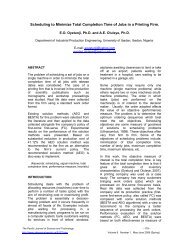Restoration of Compressive Strength of Recycled Gypsum Board ...
Restoration of Compressive Strength of Recycled Gypsum Board ...
Restoration of Compressive Strength of Recycled Gypsum Board ...
You also want an ePaper? Increase the reach of your titles
YUMPU automatically turns print PDFs into web optimized ePapers that Google loves.
Figure 4: <strong>Compressive</strong> <strong>Strength</strong> against Blends<br />
(Fresh Raw).<br />
The compressive strength increases with<br />
moisture content. So, drying the recycled<br />
products under sun for good length <strong>of</strong> time gives<br />
an improved strength to the molds.<br />
Color degradation is another sign <strong>of</strong> degenerated<br />
POP powder as the original and fresh sample<br />
retains white appearance.The whitish colour <strong>of</strong><br />
the original gypsum powder can be easily<br />
restored in the waste with calcination above<br />
120 0 C.<br />
The raw Plaster <strong>of</strong> Paris is hygroscopic. It is, thus,<br />
necessary to calcine a stale raw Plaster <strong>of</strong> Paris<br />
powder to release the water trapped in its crystal<br />
lattices before its eventual use.<br />
APPENDIX A - Determination <strong>of</strong> Mole <strong>of</strong> Water<br />
<strong>of</strong> Crystallization<br />
Mass <strong>of</strong> Dish, Md = 37.15g<br />
Mass <strong>of</strong> Dish + <strong>Recycled</strong> powder, Mdp = 47.15g<br />
After heating for six hours at 180 0 C<br />
Mass <strong>of</strong> Dish + Dried Powder, Mdd = 45.36g<br />
Mass <strong>of</strong> water lost, Mw = 47.15 – 45.36<br />
= 1.79g<br />
Molar mass <strong>of</strong> water = 18 g/mol<br />
Mole <strong>of</strong> water lost, Mow = 1.79/18<br />
= 0.099mol<br />
Mass <strong>of</strong> anhydrous CaSO4 = Mdd – Md<br />
= 45.36 – 37.15<br />
= 8.21g<br />
Molar mass <strong>of</strong> CaSO4 = 159.6 g/mol<br />
Mole <strong>of</strong> anhydrous CaSO4 = 8.21/159.6<br />
= 0.051 mol<br />
To determine x in CaSO4 .xH2O (i.e., ratio <strong>of</strong> mole<br />
<strong>of</strong> water to CaSO4):<br />
x = 0.099/0.051<br />
= 1.94<br />
≈ 2<br />
Therefore, the molecular formula <strong>of</strong> the<br />
compound is:<br />
CaSO4. 2H2O<br />
(i.e., the mole <strong>of</strong> the water <strong>of</strong> crystallization is 2).<br />
APPENDIX B - <strong>Compressive</strong> <strong>Strength</strong><br />
Determination and Strain-Stress Analysis<br />
Parameters Used<br />
Area, Ao = Л d 2<br />
The Pacific Journal <strong>of</strong> Science and Technology –47–<br />
http://www.akamaiuniversity.us/PJST.htm Volume 11. Number 2. November 2010 (Fall)<br />
4<br />
Volume = Area x height<br />
Bulk Density, γb = weight<br />
Volume<br />
Water content = Ww x 100%<br />
Ws<br />
Ww = water weight (lost in drying)<br />
Ws = dry solid weight<br />
Corrected Area, A1 = Ao<br />
1- ∑<br />
∑ = unit strain<br />
Stress( <strong>Compressive</strong> <strong>Strength</strong>) = Total<br />
Load/Corrected Area


